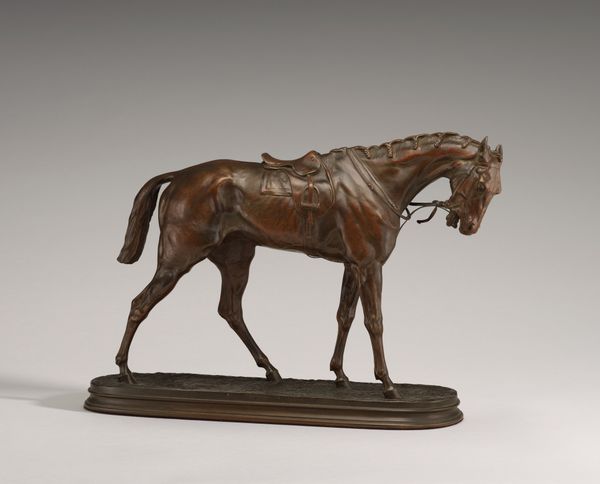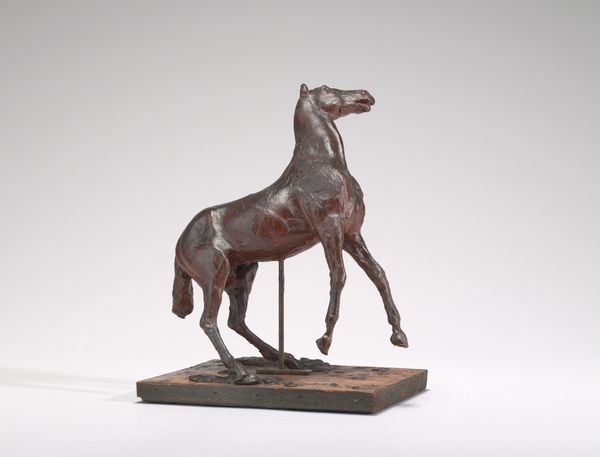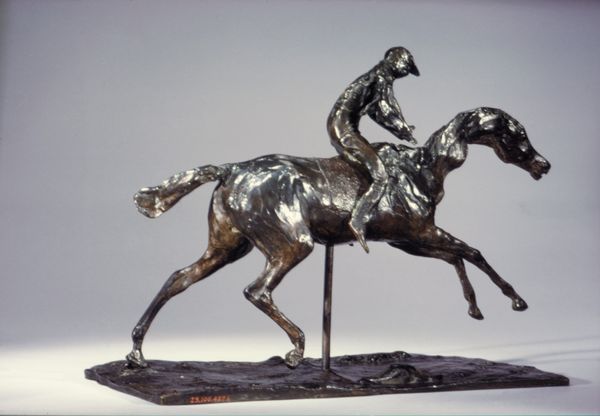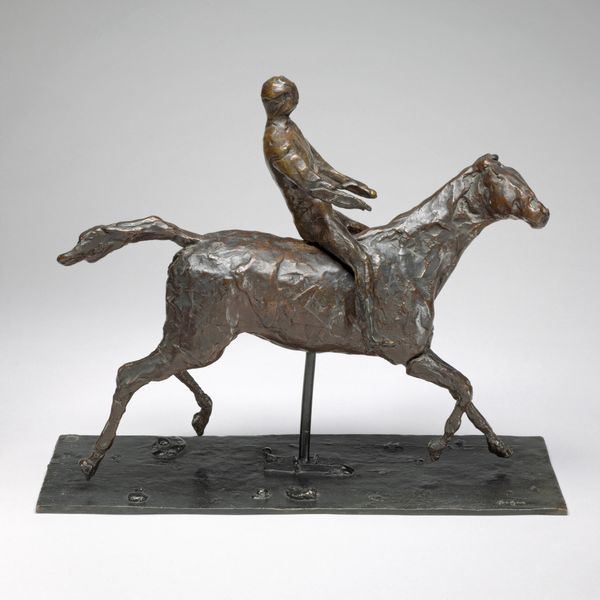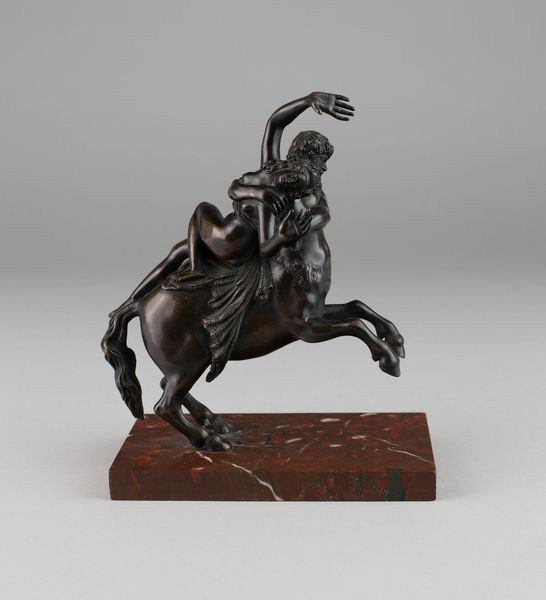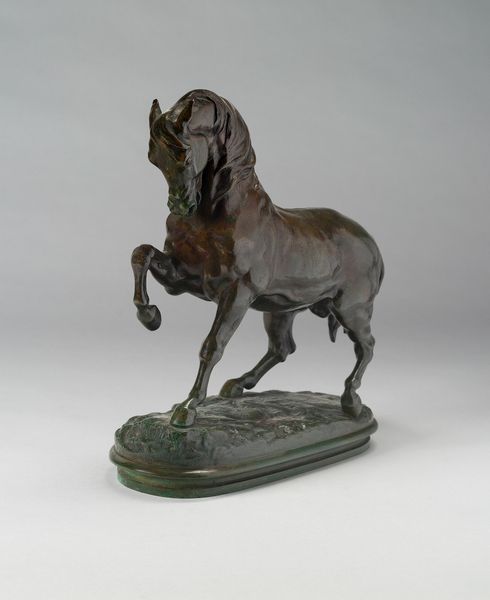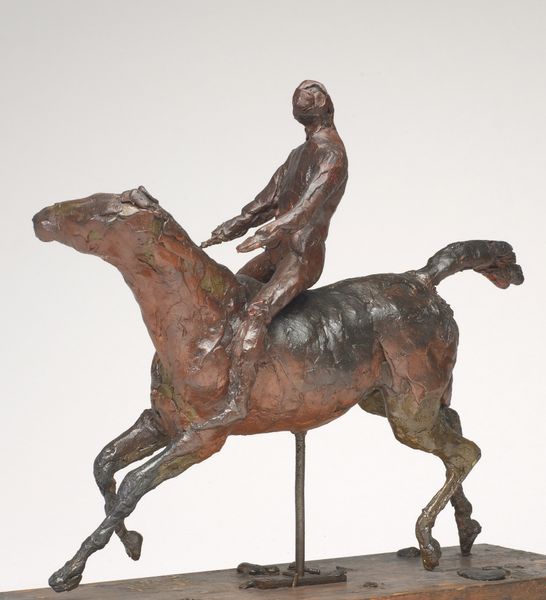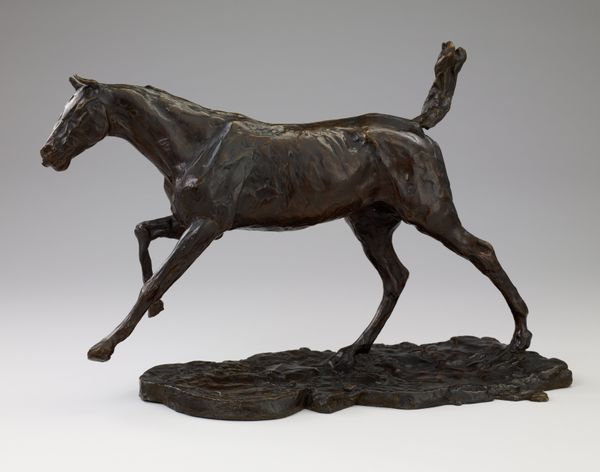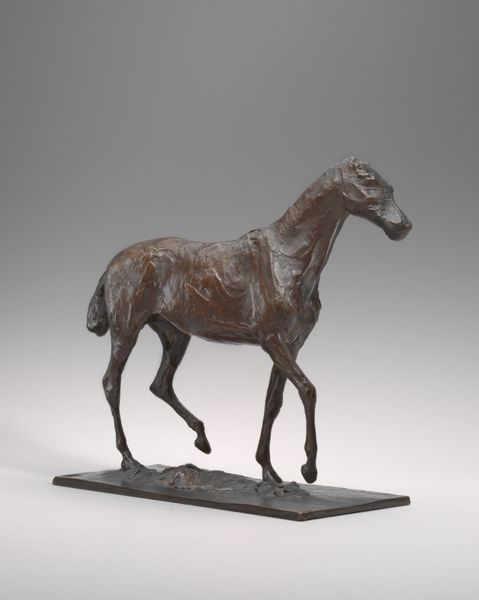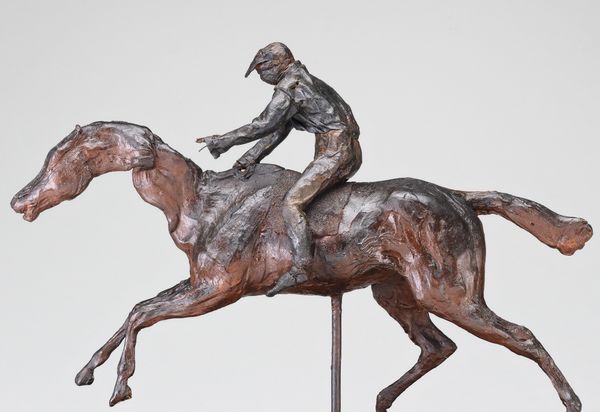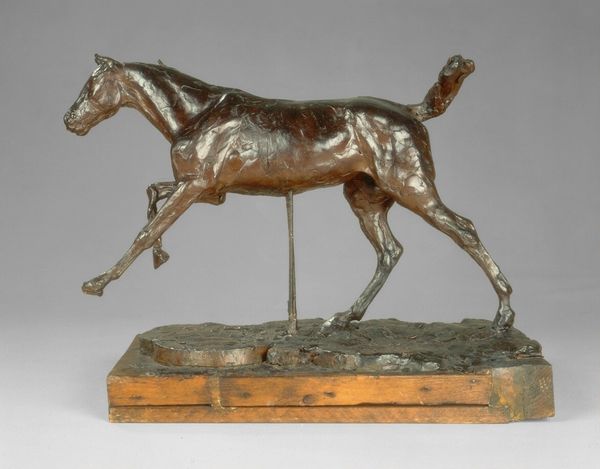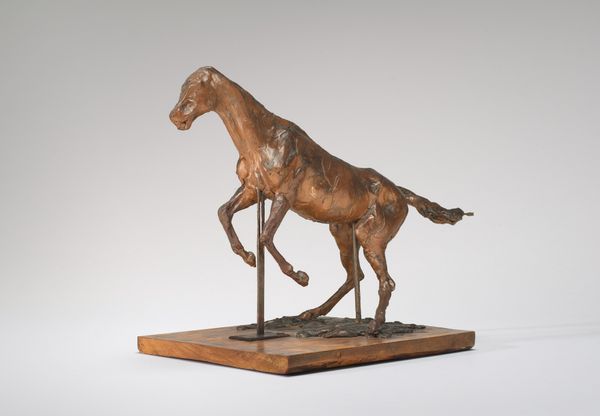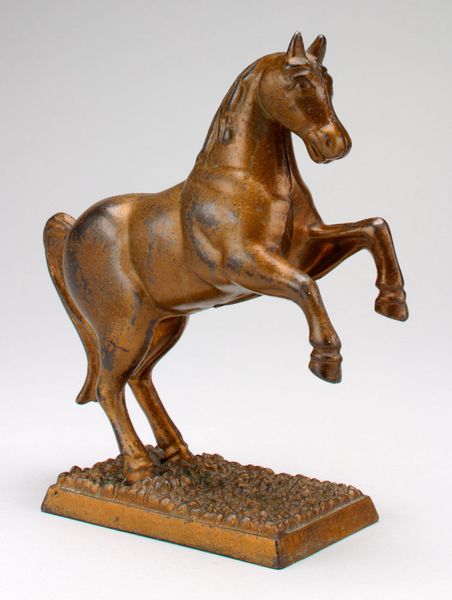
Horse Galloping on the Right Foot, the Back Left Foot Only Touching the Ground c. 1890s
0:00
0:00
Dimensions: overall without base: 18.9 x 7.1 x 32.2 cm (7 7/16 x 2 13/16 x 12 11/16 in.) height without base (of horse): 18.1 cm (7 1/8 in.)
Copyright: National Gallery of Art: CC0 1.0
This bronze sculpture of a horse and jockey was created by Edgar Degas, probably around the 1880s. Degas was fascinated by the movements of horses, and this piece captures a fleeting moment in a race. The sculpture's rough, textured surface reveals the artist's hand. Degas originally modeled the horse in wax, a soft, pliable material that allowed him to quickly capture the animal's dynamic pose. The wax model was then cast in bronze, a more durable material that allowed the sculpture to be reproduced and displayed. Degas's choice of materials reflects his interest in both traditional fine art and more modern, industrial processes. Bronze casting was a well-established technique, but Degas's expressive handling of the wax model shows a distinctly modern sensibility. He was interested in capturing the energy and movement of the horse, rather than creating a perfectly smooth and polished surface. This emphasis on the process of making, and the way that materials can be used to convey emotion, is a key aspect of Degas's work.
Comments
No comments
Be the first to comment and join the conversation on the ultimate creative platform.
